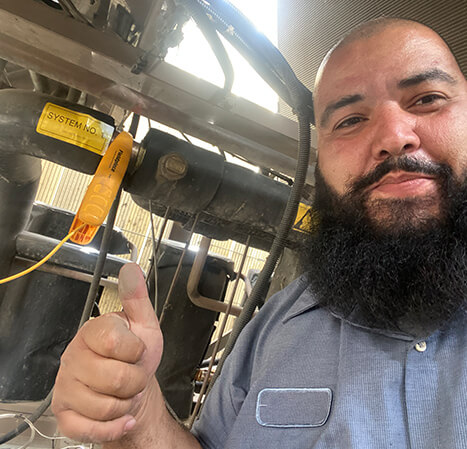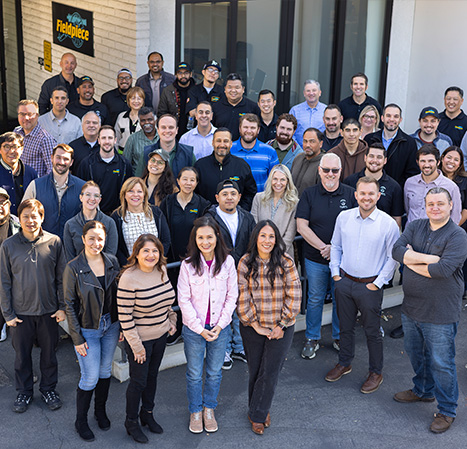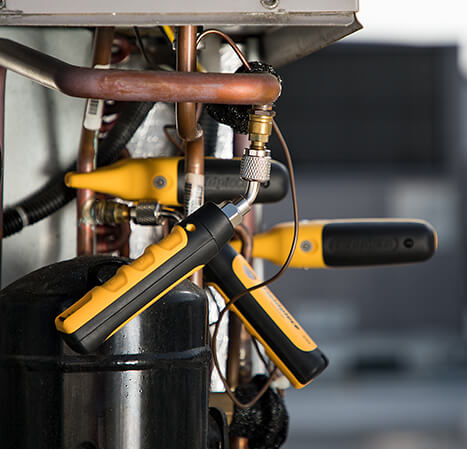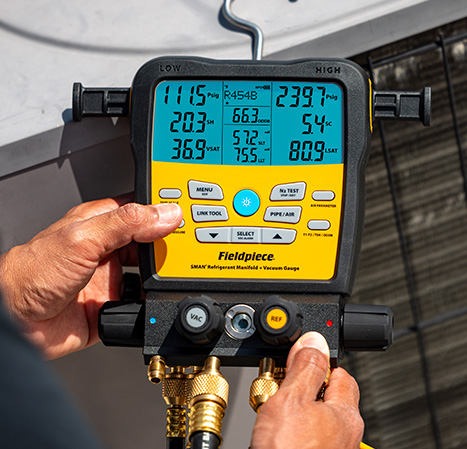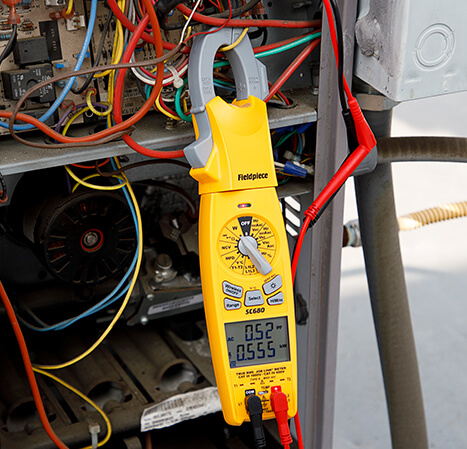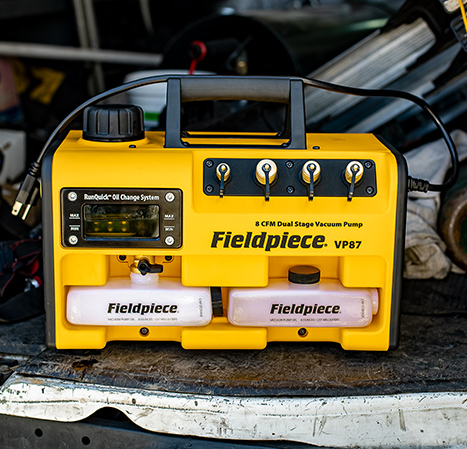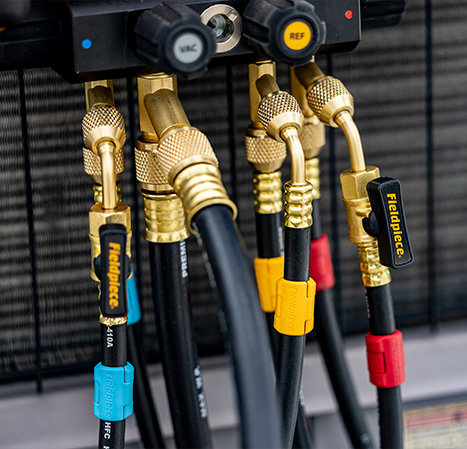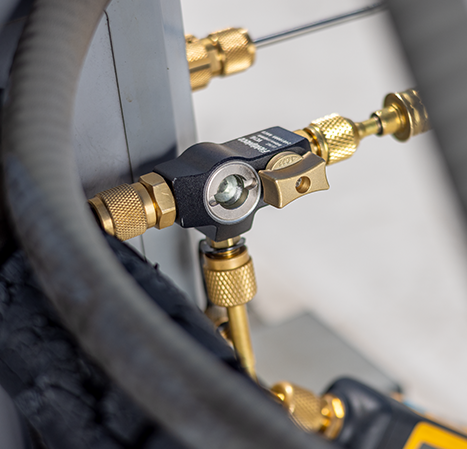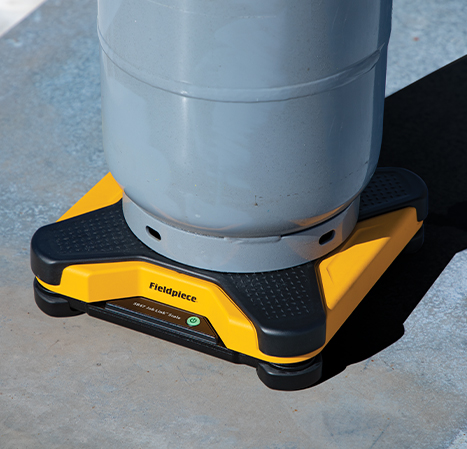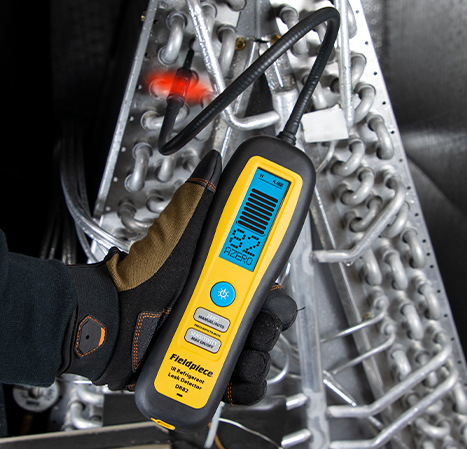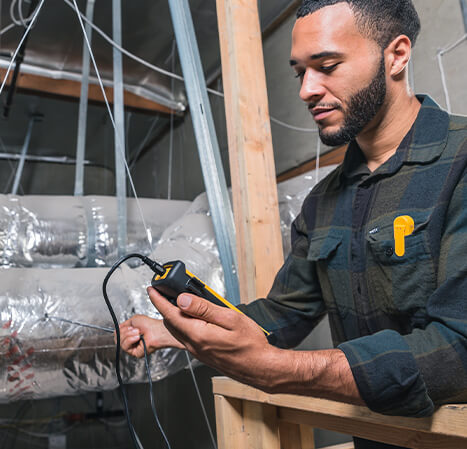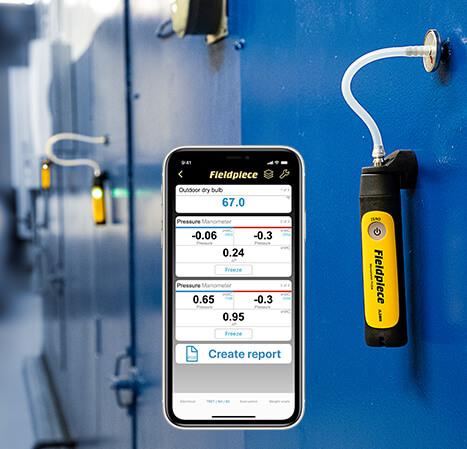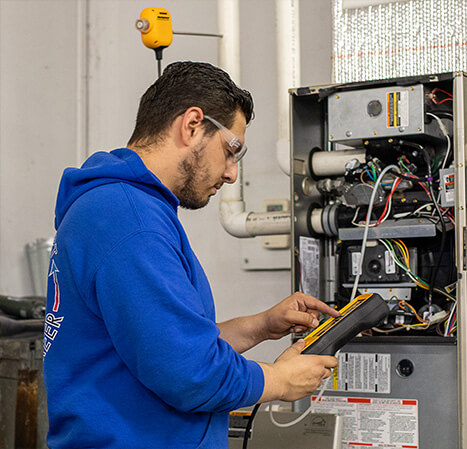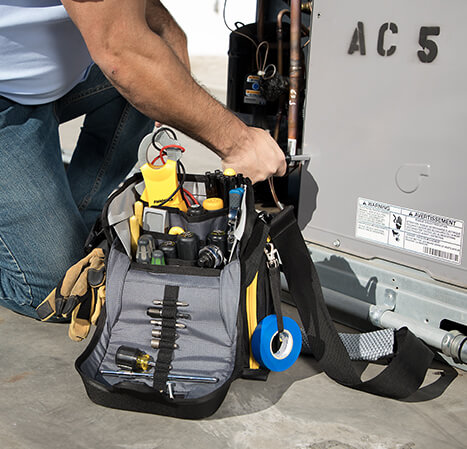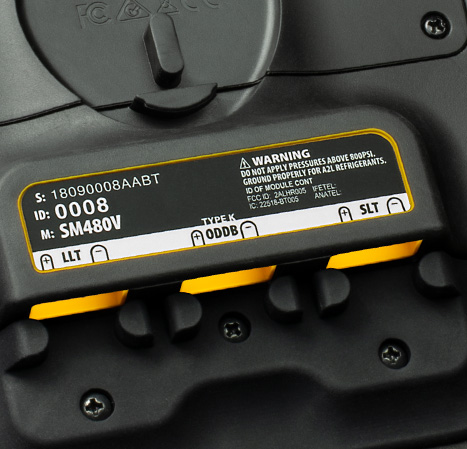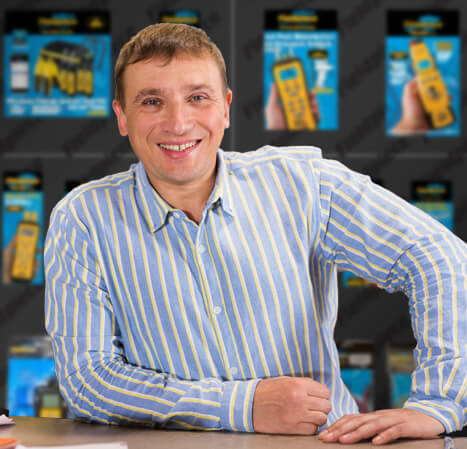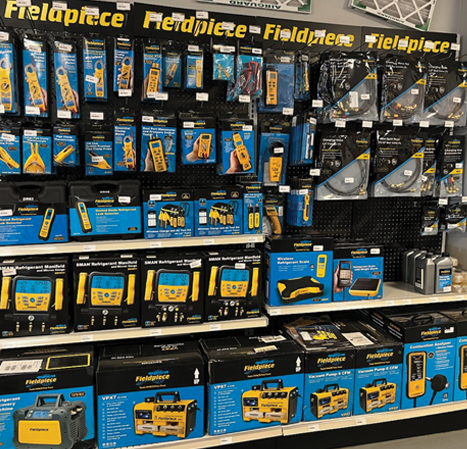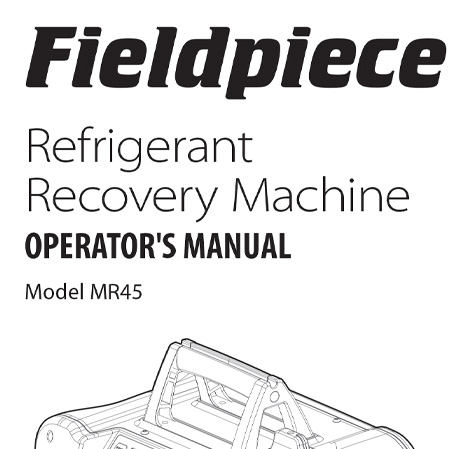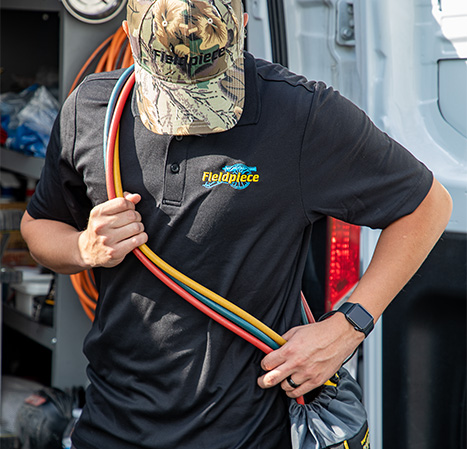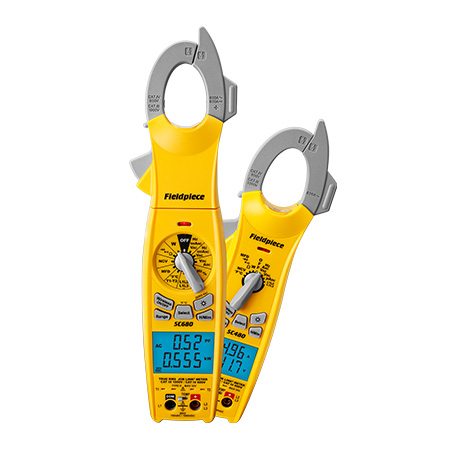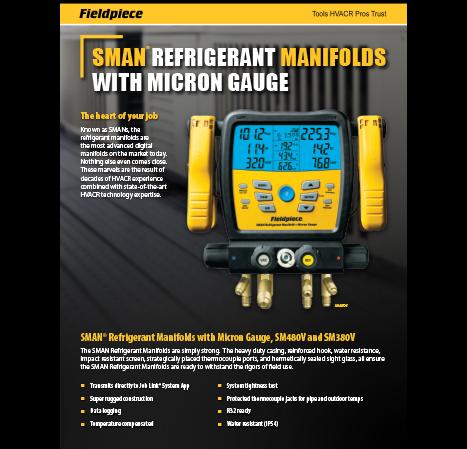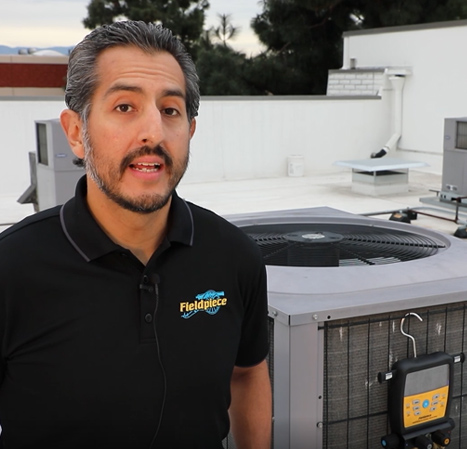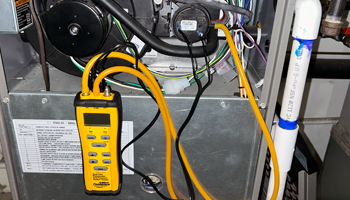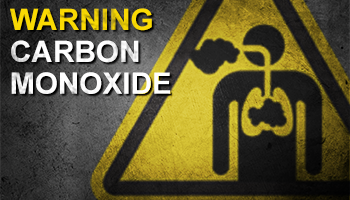Fieldpiece is always looking for innovative ways to make tech’s job easier, faster and better, and the combination of Job Link Probes and the Job Link System App do just that. Did you know that you can now use these tools to conduct a temperature compensated, nitrogen pressure leak test? Let’s walk through when to run a pressure test and some of the key steps in the process.
If you’re conducting a service call and have made repairs on a system, it’s important to make sure that it’s a clean, dry, and tight system – especially if you brazed new copper, added flared connections, or repaired other mechanical connections. A nitrogen pressure leak test is an excellent way to ensure that the system doesn’t have any leaks before charging it.
It’s recommended to run a pressure test, also called a tightness test, after a leak has been detected and repaired, or on new installs before charging with refrigerant. The test fills the system with nitrogen under pressure to determine whether it can hold that pressure over time, verifying there are no leaks. Nitrogen is an inert gas and is much safer and cheaper to use than refrigerant.
Before adding nitrogen and conducting a pressure test, record the initial pipe temperature and determine the length and volume of the tubing that is being filled to calculate the amount of nitrogen you will need. Then, make sure there aren’t leaks at the Schrader cores. You should also test your hoses and anything else connected to the system during the test.
Start by purging the system with nitrogen. This is different than flowing nitrogen – that’s at a much lower pressure. Purging allows nitrogen to flow into one side of the system and then out the other. This displaces all excess oxygen and air in the piping. Since you’re working with gas under pressure, be sure to work safely. Any gas under high pressure should be handled carefully and transported per the Department of Transportation guidelines.
After purging, replace the valve cores if you removed them, and attach a pressure regulator to the nitrogen tank and a charging hose to the service port. Be sure to use a regulator that is made for nitrogen and properly sized for the target pressure. Attaching a Job Link® System JL3PR Pressure Probe to the system can offer additional accuracy compared to the standard regulator dial. To monitor temperature, connect a Fieldpiece JL3PC Job Link® System Pipe Clamp to the system. Note that you can also use your Fieldpiece SMAN® digital manifold to run a nitrogen pressure test.
Once the system is prepared, start to slowly pressurize the system. Start with 100 psi and let the system sit for a minute. Then add another 100 psi and let it sit again. Typically, the recommended test pressure range falls within 200-600 psi, but check the system manufacturer’s specifications. If you’re pressurizing the low side of the system, use the manufacturer’s rated test pressure. Note that a stepped process that gradually increases pressure is not only safer, but it can also prevent wasting time and nitrogen.
Once the system is under pressure, isolate it by removing the charging hose and capping the Schrader port. If you’re working on a residential system, let it sit for 30 to 60 minutes. Some larger, commercial systems require a nitrogen pressure test to sit for 24 to 48 hours. Check with the manufacturer’s recommendations for the exact time needed.
If the system needs to sit for an extended period, temperature fluctuations in the environment will affect the pressure of the nitrogen in the system. Make sure to compensate for these changes in pressure before concluding that a system is leaking. Note that the new pressure test feature in the Job Link System App compensates for temperature fluctuations, as does the Fieldpiece SMAN digital manifold.
If you see a drop in the temperature compensated pressure over time, it means there is a leak. Bubble test every fitting and connection to find the source of the leak. This includes every field-fabricated joint in the system. Any of these could be a potential leak point.
When performed correctly, a nitrogen pressure test is an easy and safe way to determine if a system can be charged with refrigerant. Download the latest Fieldpiece Job Link ® System updates from the app store to include the nitrogen pressure test features. Learn more at www.Fieldpiece.com.
 English
English French
French Spanish
Spanish

